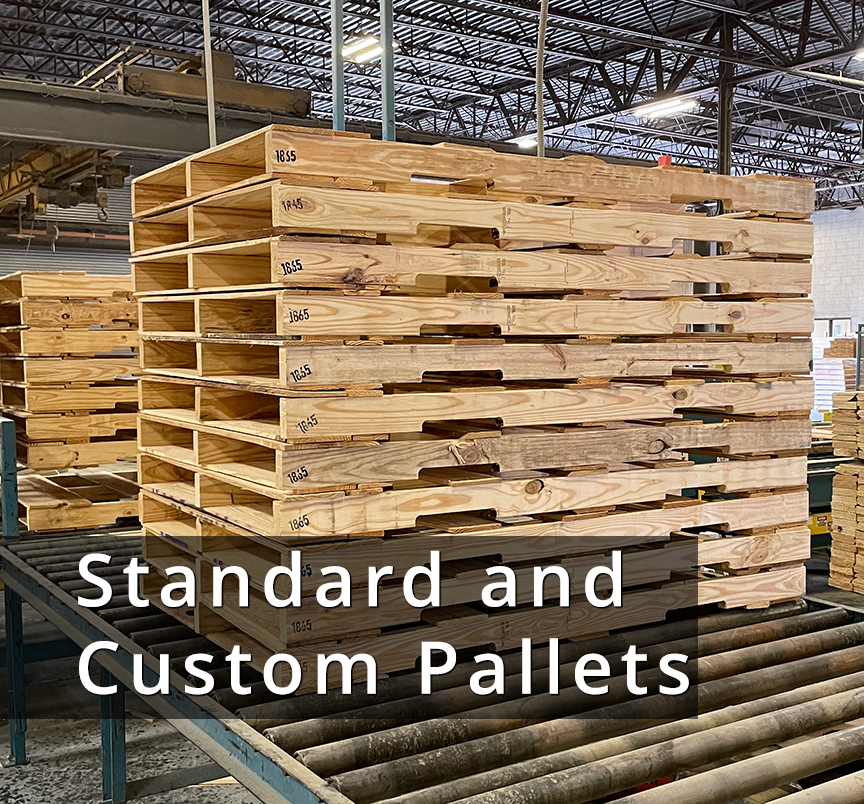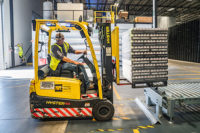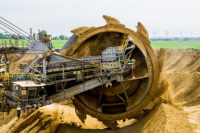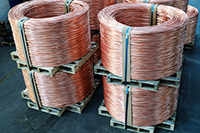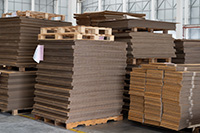Supply chain sustainability matters. Learn more about our sustainability initiatives and how we help our customers meet their own environmental and sustainability goals. Read about it here.
Transportation Packaging to Solve All Your Supply Chain Challenges
Whether you’re looking for a custom pallet, a unique or hybrid crate, or a complete integrated packaging solution using multi-materials, such as corrugate, plastic, and foam, Conner Industries provides industrial manufacturers with cost-effective protective packaging and service solutions, tailored to fit your product, and designed to optimize your supply chain.
With over 40 years of experience in industrial transportation packaging, and multiple locations nationwide with backup capabilities, we’re quick, nimble, and capable of rapidly responding to your needs.
Our educated, knowledgeable subject matter experts, experienced design team, and packaging engineers work with manufacturing operations to address a variety of challenges and help reduce the total cost of industrial packaging. We keep your production lines moving!
Industries We Serve
Big or small, lightweight or heavy, durable or fragile – your valuable products need protection from in-transit damage at a total cost that optimizes your supply chain. We understand how important it is to safeguard your product, no matter the industry, where it’s going, or how it’s getting there.
Explore Our Conner Colorado Division
Anderson Pallet and Crate
In business since 1982, Anderson Pallet and Crate is a trusted supplier of wooden pallets, skids, and crates. Anderson Pallet and Crate is known for its exceptional service and going above and beyond for customers. It offers a variety of services designed to cater to your specific needs.
We specialize in making custom crates and pallets for your every need. Our long-standing customers rely on us to provide exceptional quality with quick turnaround times. We have a proven track record of reliability, no matter the industry served. Our packaging solutions make shipping your products easier, faster, and safer.
Located in Sedalia, Colorado, minutes from I-25, just south of Denver, Anderson Pallet & Crate is poised to serve customers in the Rocky Mountain region. There is no need to lose time or efficiency, let us help make your life easier today!
Denver Reel & Pallet Company
Established in 1970, Denver Reel & Pallet Company has been supplying durable industrial transportation packaging to customers for more than 50 years. No matter what challenge you may be facing, our team is dedicated to helping you find the perfect shipping solution for your product or materials.
Specializing in custom pallets and crates, we are an experienced supplier with extensive knowledge of industrial wood products. We create quality packaging solutions in a wide variety of industries.
We are located blocks from I-70 and only 4 miles from I-25, which allows us to serve the entire front range.
Foam Cutting Specialist and Integrated Packaging
Guardian Packaging Industries
A Division of Conner Industries, Inc.
This Dallas manufacturing facility is a foam cutting specialist and an integrated packaging provider, combining wood, foam, and corrugate components. The division also includes the Southwest Air Products division, producing adhesive foam tapes for a variety of applications.
Guardian serves large manufacturing customers with industrial packaging and military SPEC non-metallic component products, and will continue to be a major provider of custom-cut foam for military drones. Registered with CCR and SAM, our Dallas location also maintains AS9100D and ISO9001 certifications (Southwest Air Products, a division of Guardian Packaging is not AS9100D and ISO9001:2015 certified,) and recycles 35 tons of material annually as part of their seasoned environmental, social, and governance (ESG) practices.
Multiple Locations to Serve You!

